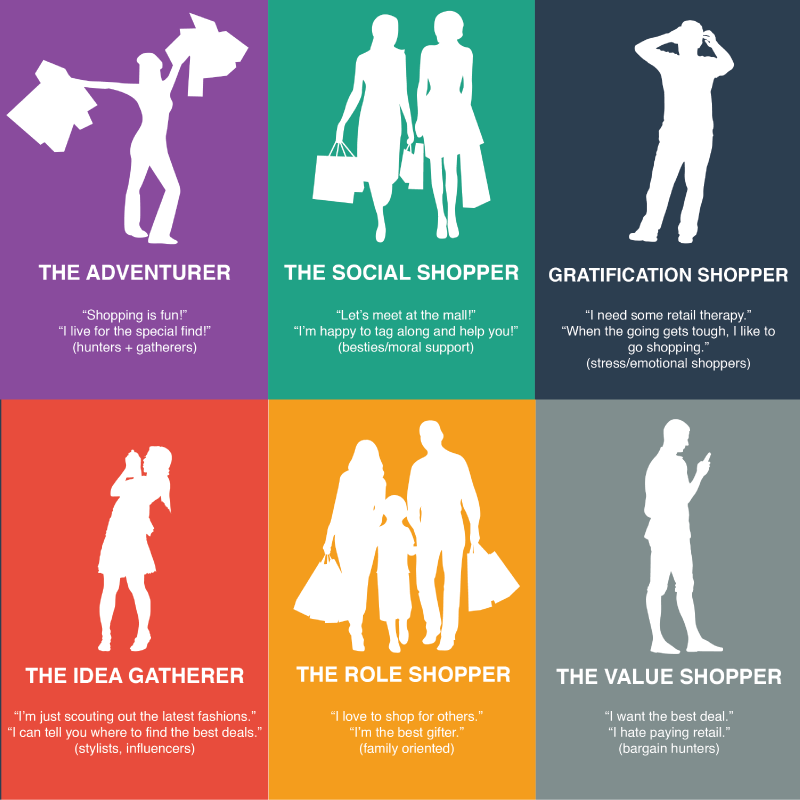Customers are motivated by vastly different things. Don’t make yours motivated by price.
If you had to describe recent decades as macro shopping patterns, it would have to be that the 1980s were about status, the 1990s were about price and the rise of the all-in box store, the 2000s were all about conspicuous spending, but where does that leave the 2010s?
It’s interesting that in an era where things we need are costing more than ever before, the main motivator for shoppers does not always seem to be price. In a world where you can spend 30 minutes in your pajamas to find the lowest price on an iPad, people still spend hours in the Apple store, just browsing and trying out the shiny new things. What exactly is going on there?
The 2000s saw the rise of ecommerce and its effects on bricks and mortar- it had a polarizing effect. Some businesses thrived. Others were the victims of showrooming. Some people still prefer to do all their shopping in person. A quick check of any mall parking lot in December confirms this. People are shopping in store, and sometimes paying a premium to do so.
What seems to set retailers apart in this new paradigm are retailers who understand their role in customer care, and that customer care starts the moment the door opens. According to an Oxford study in 2013, what customers really care about isn’t decoration or cheerily delivered sales scripts, it’s a salesperson’s ability to read a customer’s mood and deliver what’s needed to them in the moment. Understanding when a customer is in a hurry or buying a gift for someone who is unwell is a key part of sales success, according to the study’s findings. The same study found that women are actually distrustful of red “sale” signs, and often second guess whether they are being manipulated.
What customers really care about isn’t decoration or cheerily delivered sales scripts, it’s a salesperson’s ability to read a customer’s mood and deliver what’s needed to them in the moment.
Psychology today looked at the psychographic profiles of different types of shoppers and found they are motivated by sometimes wildly different reasons to shop: adventure, social outings, indulgence, trends, relationship to a recipient were all cited as strong motivating factors toward driving purchases.

What’s Working in Retail Right Now
Who’s winning the retail game? Think small. Small as in brands, and small as in square feet. Many large retail operations are moving into smaller, more urban focused spaces and catering to the needs of urban dwellers. This is partly due to the cost of operating in these markets versus the amount of foot traffic moving to e-commerce solutions. Stores simply don’t need to be as big anymore. How do stores win in that case?
Studies show that customers will walk around and browse more in a smaller location. The more you browse, the more opportunities for you to find something you’re going to purchase, and the larger your bill might be. Smaller stores also bring you in contact with sales staff more, enabling more touches and more opportunities to get questions answered.
The think small ethos has also worked to bring big attention and a healthy bottom line to retailers like Warby Parker. They’ve managed to successfully bridge the offline-online gap in a vertical that most would agree requires in-store shopping: eyewear. It turns out, that they’ve managed to do what traditional retail wisdom tells us is impossible: Take a primarily online business and segue it into retail success. They boast nearly 50 stores in the United States and Canada. (Up from 0 in 2010.) Their “try at home” program still exists, but foot traffic at their stores is healthy.

What’s Working in E-commerce Right Now
Customization was a theme about 7 years ago we were promised would win big in the future. While it has had some moderate success for some retailers, it’s largely not been a real vertical killer for brands who have tried. More options means more overhead in the form of inventory you may never move and can’t repurpose. It turns out, customers don’t want custom products, they want custom curation.
It turns out, customers don’t want custom products, they want custom curation.
What’s been working for many retailers is an old fashioned idea: Newsletters. 2016 was, for retailers and media companies alike the Year of the Newsletter.
Email is still king when it comes to driving sales. Search barely beats it out, but that’s for consumers who already know what they want. For those who are “just browsing” or undecided, Email is the best bang for a marketing buck.
The ability to tailor content to a specific customer based on shopping preferences, time of year, and purchase history has changed the game for many retailers. Our own partners have seen real foot traffic and conversions from implementing Salesfloor to personalize the shopping experience for individuals.
Associates using the Salesfloor platform can create personalized email marketing campaigns in which they can offer special promotions or recommendations. Presenting the right goods to the right customer at the right time leads to sales lift, much like hand selling in store by judging a customer’s mood and style works.
The Road Ahead
No one has a crystal ball to know what’s next for retail, but what works- Observing, Listening to and Responding to customers is not a purely offline or online play. These are cornerstones for selling and increasing cart sizes. We predict that a mixture of human interactions, data, and real customer feedback will further refine the way products are sold in 2017 and tech will be a key part of lowering friction to purchase, increasing purchase frequency, and increasing purchase sizes for retailers.
Observing, Listening to and Responding to customers is not a purely offline or online play.
We’re thrilled to work with our partners to watch this transformation of retail happen in real time and are excited for what’s next.
